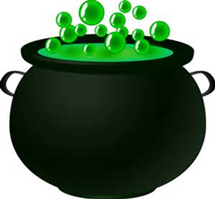The term “integrative therapies” describes the carefully designed regimen that combines both medicinal treatments and non-medicinal ones to maximize positive outcomes and minimize the negative impacts of cancer and its treatment on quality of life. The field of integrative oncology is targeted toward reducing the ferocious side effects of standard chemotherapy and radiation treatments that can occur when therapies intended to target cancer cells also damage healthy ones or disrupt a patient’s normal body processes.
“Standard” or conventional treatments are medicinal treatments for which scientific evidence from highly structured clinical trials has demonstrated positive control over cancer’s progression. Such therapies include surgery, radiation, chemotherapy, bone marrow transplants, immunotherapies, and other techniques for which evidence shows positive impacts on the course of the disease.

Despite proven and often curative health benefits from standard treatments, the negative effects of many chemo drugs (like pain, fatigue, violent nausea, sleeplessness, headaches, and even long-term cardiac, kidney, or other organ failure) are the most widely known and feared aspects of cancer treatment. Studies by the National Institutes of Health (NIH) and particularly the National Health Interview Surveys (NHIS) have revealed widespread use of unorthodox treatments among people who have received a cancer diagnosis.
“Alternative” refers to non-medicinal substances and practices (like laetrile, marijuana, and herbal remedies) used instead of classic medicinal or chemical treatments.

The problem with such “alternatives” is that some may fail to slow down cancer’s progression or may actually interfere with potentially curative medicinal treatments. Evidence shows that delaying conventional treatment by relying on alternative treatments may even decrease the odds of survival, especially when done without oncologist consultation.
Some of these substances (like laetrile) contain poisons (such as cyanide) and can be harmful in themselves. Others, like herbal remedies, antioxidant-rich dietary supplements, and juices high in antioxidants may interfere with the curative processes that chemotherapy and radiation use to stop cancer’s progression. Still others may intensify the impact of a given dose of medicine, causing more harm than help. Worst case, some practitioners of alternative treatments engage in the worst kinds of fraud, charging patients high prices under the false premise that such substances will change disease progression or long-term outcome.

STATNEWS (a national newsletter focused on health, science, and sponsored by The Boston Globe) reports that some major academic cancer centers known for their scientific research are now promoting alternative therapies that carry “no scientific backing.” This report was also carried by the Public Broadcasting System and cited by Managed Care Magazine. The unproven therapies are said to include energy healing, homeopathic bee venom, spiritual healing, reiki (minimal-touch) massage, detoxification programs, intravenous vitamin and mineral therapies, and more, offered as curative for a wide variety of conditions.
Dr. Steven Novella, a professor of neurology at the Yale School of Medicine and a critic of alternative medicine, was quoted in the STAT article as saying that doctors who promote not-yet-validated practices have “become witch doctors, . . . forfeiting any claim . . . to being a science-based profession.” Another physician, Steven Salzberg, from Johns Hopkins, says in the same article that if a hospital “offers treatment that’s based on fantasy, it undermines the credibility of the institution.”
Studies are being conducted to seek scientific evidence in support of the impact of untraditional treatments on both healing and symptom relief. Yet according to the International Journal of Health Sciences:
“Conventional medicine relies on methods proved to be safe and effective with carefully designed trials and research. But many . . . alternative treatments lack solid research on which to base sound decisions.”
In other words, if you seek to become cancer-free, reliance primarily on unproven alternative therapies without consulting with your oncologist is a bad idea.
“Complementary” or “integrative” treatment focuses on the whole patient, combining curative therapies with a variety of mind/body practices for symptom and treatment side-effect relief. Complementary practices include acupuncture, therapeutic massage, meditation, movement therapies (like yoga and Tai Chi), guided imagery, music and art therapy, and some types of nutritional counseling. Exercise is also often recommended (with physician approval) to help reduce fatigue, build muscle strength, and reduce stress.

Clinical studies are now testing the benefits of integrating such non-curative symptom and side-effect relief tactics with traditional therapies may help curative therapies by lowering stress, reducing pain, increasing energy level, improving sleep, and boosting a patient’s sense of well-being. The goal is improving quality of life during treatment. One of the physician leaders in the field of integrative therapies is Dr. David S. Rosenthal, co-founder of the Leonard P. Zakim Center for Integrative Therapies at the Dana-Farber Cancer Institute and co-founder of the Society for Integrative Oncology (with Dr. Barrie Cassileth, Ph.D.).

A trained clinical researcher and practitioner in lymphoma and leukemia, Dr. Rosenthal endorses the need for cancer therapies to advance beyond traditional medical care. He contends that the major selling point of integrative therapies is symptom relief, to help cancer patients cope with gold-standard and often aggressive cancer treatments. Dr. Rosenthal advocates incorporating the best of the non-medical practices into patient care:
“We have some of the best therapies in the world in cancer treatment, but we’re learning that we need to pay attention to quality of life and do as much as we can to allow patients the best chance to tolerate therapies, dealing with the side effects of both cancer and the therapies themselves.”
In the end, cancer therapy is about both curing the cancer and treating the whole patient. Now that clinical research is revealing the benefits of complementary non-medicinal therapies for relaxation, pain relief, and stress reduction, it may also demonstrate how they may improve the therapeutic impact of standard-of-care chemotherapy and radiation treatments.
The bottom line? Seek evidence that complementary treatments work before relying on them, and consult your medical team. Physician and patient guidelines are available at the Society for Integrative Oncology or at the National Center for Complementary and Integrative Health (office of the NIH).
